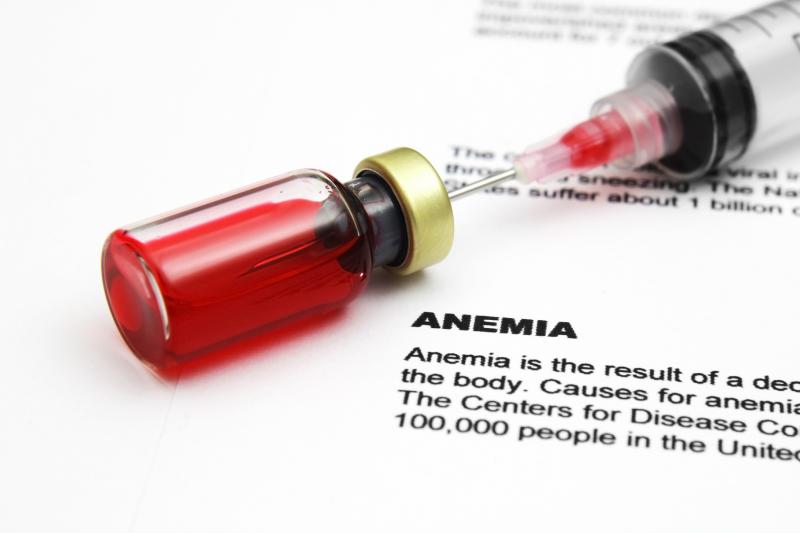Is metformin making T2D patients anaemic?





Metformin use in patients with type 2 diabetes (T2D) appears to contribute to an early reduction in haemoglobin (Hb) levels, which in turn leads to a higher incidence of moderate anaemia, according to data from the MASTERMIND study.
Although not large, the absolute Hb reductions translate to an overall effect in the real-world population study of a 2-percent higher risk of anaemia annually per 1 g/day of metformin, the investigators pointed out.
MASTERMIND was a posthoc analysis of three datasets: two randomized controlled trials, namely A Diabetes Outcome Progression Trial (ADOPT; n=3,967; mean age, 56.6 years; 58.9 percent male) and UK Prospective Diabetes Study (UKPDS; n=1,473; mean age, 52.8 years; 47.1 percent men), and the real-world population cohort Genetics of Diabetes Audit and Research in Tayside Scotland (GoDARTS; n=3,485). Anaemia was defined as Hb <11 g/dL.
ADOPT comprised 1,343 metformin, 1,289 sulfonylurea, and 1,335 thiazolidinediones (TZD) users, of whom 2.8 percent, 1.5 percent, and 5.7 percent developed anaemia, respectively, over a 5-year follow-up.
Meanwhile, UKPDS included 300 metformin-, 461 sulfonylurea-, 360 insulin-, and 352 diet-treated patients. Anaemia event rates were 6.3 percent, 1.1 percent, 2.5 percent, and 1.7 percent, respectively, over 9 years of follow-up.
An immediate drop in both Hb and haematocrit (Hct) levels occurred within the first 6 months of treatment in both metformin and TZD groups and lasted up to 3 years in ADOPT. There was no further decrease in Hb noted between 3 and 5 years. [Diabetes Care 2020;doi:10.2337/dc20-1104]
Likewise, there was a marked decline in Hb recorded at the first follow-up visit at 3 years in metformin users in UKPDS. Hb levels at 6–9 years were low in all treatment groups with no significant differences. There was a parallel drop in packed cell volume (proxy for Hct) observed with metformin treatment, and its correction largely ameliorated the decrease in Hb.
“The finding in ADOPT, and to a large extent in UKPDS, that the fall in Hct mirrors the fall in Hb is consistent with the anaemia being caused by a reduction in red cell mass or an increase in plasma volume, or both,” according to the investigators.
On logistic regression analysis, metformin use was associated with a higher likelihood of anaemia compared with sulfonylureas (odds ratio [OR], 1.93, 95 percent confidence interval [CI], 1.10–3.38), as was TZD (OR, 4.18, 95 percent CI, 2.50–7.00) in ADOPT. In UKPDS, the ORs for anaemia were 3.40 (95 percent CI, 1.98, 5.83) on metformin, 0.96 (95 percent CI, 0.57, 1.62) on sulfonylureas, and 1.08 (95 percent CI, 0.62, 1.87) on insulin relative to diet.
Other predictors of moderate anaemia risk were older age, lower baseline Hb, and male sex.
In GoDARTS, moderate anaemia occurred in 1,458 individuals (41.8 percent) overall—745 in current metformin users, 194 in former users, and 519 in nonusers—over a median follow-up of 8.3 years. Its risk among metformin users increased according to cumulative exposure (1 g/day: OR, 1.02 per year), with the pattern being linear after an initial high rate within the first year of treatment.
“It is … likely that this initial greater risk of anaemia with metformin can be attributed to an immediate effect of metformin on Hb, particularly in light of the ADOPT data where we see a significant change at 6 months,” the investigators noted.
How metformin might cause an early decline in Hb is unknown, but it is unlikely to be due to vitamin B12 deficiency alone given the time course, they argued.
Taken together, because the benefits of the drug still outweigh the modest effects on anaemia, “we would not in any way advocate avoidance or discontinuation of metformin, even in patients with anaemia, but a reduction in Hb in the first few years after initiation of metformin might be anticipated,” the investigators concluded.